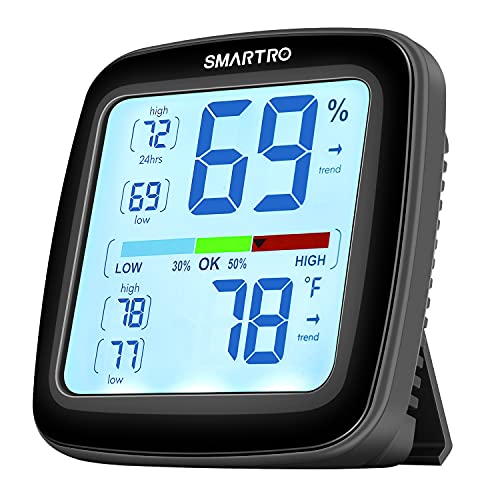Last Updated on January 2, 2024
Humidifiers can help treat dry air in your home and improve overall relative humidity indoors to comfortable levels. However, if the amount of water dispersed by humidifier is greater than recommended, it can affect you and your home. You are of course first priority. But what about your home. Can humidification really hurt your home? Can a humidifier damage its walls?
Humidifier can damage walls of your home if it increases humidity to levels causing condensation of water vapors in air. This water will settle and cause mold on walls, that will feed on it. Paint on walls can damage and flake off with extensive humidifier operation, especially in winters on ceiling walls with homes that have poor attic insulation.
There are many variables that decide if using humidifier will have negative impact on surrounding and ceiling walls of your home.
The possibility of damage depends on temperature and humidity difference from outdoors, material of construction, ventilation and even quality of insulation.
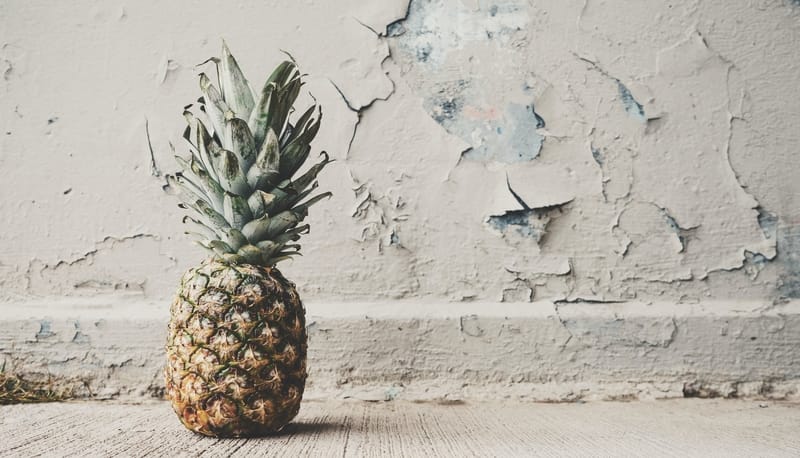
Worry not, I plan to discuss that in detail in this article. Goal is to know exactly when and if humidifier can affect your house’s walls construction and beauty.
Further, if this is true in your specific case, I have also discussed measures, tips and tricks when using humidifier, to prevent from any damage or deterioration.
How Humidifier Can Damage Walls of Your Home?
Unmonitored and inappropriate use of humidifier can damage structure and appearance of your home.
Most common direct consequence of using a humidifier, inadequately without supervision, would be high humidity. High humidity can cause mold that that deteriorates walls of your home. This damage may or may not be recoverable.
Initially mold will discolor and depreciate beauty of the affected portion of the walls. If untreated mold will eventually consume their material, to the extent that you will need to replace a good portion of it.
Also, if humidity is relatively high even before the use of humidifier, using humidifier would supplement mold on walls even more.

Generally, recommended range for relative humidity by most experts is from 30-50%. However, in cold weather, it is a good idea to stick to lower limit i.e., close to 30%. Sometimes, you might want to keep humidity even lower than that, if your home insulation is not very good. I will discuss its reason in detail later in the article.
Below, I discuss many ways by which high humidity, with inappropriate and extensive humidifier operation, could affect your home walls.
1. Water Retention on Ceiling and Surrounding Walls
As I said earlier, primary effect of high relative humidity, in the environment of your home, would be condensation. Every possible damage of your home walls starts after and due to this.
But what has high relative humidity to do with condensation of water?
Actually, condensation of water vapors in air only happens when its temperature drops below a certain value, that is called dew point temperature.
As you lower temperature of air, at a certain point, water vapor holding capacity of air will become equal to vapor it contains. This is the dew point after which water will condense out of air.
When humidity is relatively high, it becomes easier for air to condense water vapors out of it.
With extensive unmonitored operation of humidifier, humidity levels can become high enough, for condensation to happen in prominently high quantities.
Sufficiently high quantities of water on wall surfaces from air will lead to mold.
This mold will firstly weaken and peel off paint, decoration, wallpaper etc. Then it will literally eat material from the wall.
There are 2 common scenarios by which this phenomenon may affect your walls negatively:
Scenario # 1: Condensation Of Air on Cool Wall Surfaces
If humidity is sufficiently high, compared to recommended upper limit i.e., 50%, there will be undesirable amount of condensation, when air comes in contact with cool surfaces of your home walls.
A typical example would be walls with relatively thin or low-quality insulation.
Walls with inadequate insulation, lose heat to cold and dry environment outdoors, and thereby become cooler than indoors. When warm and humid air inside comes in contact with them, condensation occurs at sufficiently cool surfaces.
High humidity, that may be supplemented by your humidifier, makes this condensation much more possible.
Aftermath: Water will settle repeatedly and in large quantities for long times on surface of walls. As a result, mold will develop that will damage them slowly.
Scenario # 2: Ceiling Water Damage Due to Poor Attic Insulation
In winters, try keeping relative humidity in your home at lowest possible value that works for you, especially if you don’t have a perfect attic insulation.
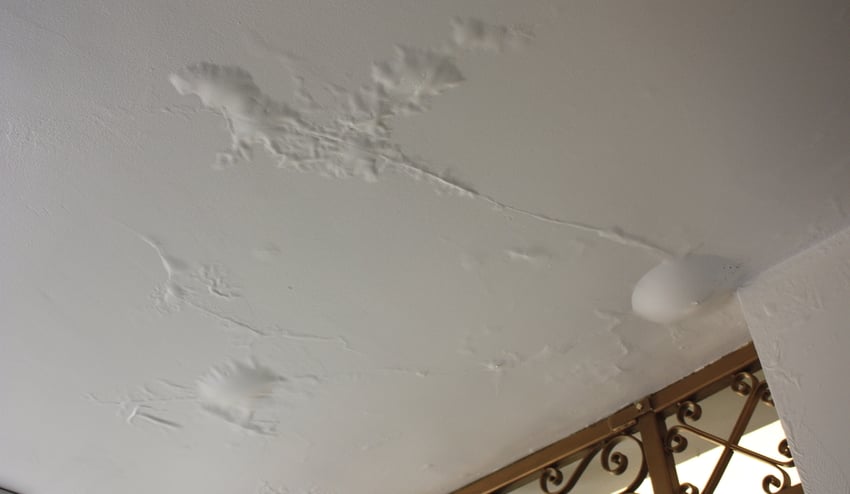
My advice is to keep relative humidity close to lower limit i.e., near enough 30%. Here’s is a good reason for that…
When weather is cold, you turn heating ON to keep your space warm. Heating dry air will further increase its dryness. Coupling humidifier with heater is a good idea to improve humidity in your home.
Consequently, hot and humid air in your home travels towards the ceiling. With inadequate insulation, it moves through the ceiling, towards attic. This movement is also supplemented by humidity difference indoors and outdoors, as the air outside is dry.
However, while moving towards colder attic, water vapors in this air will condense. In cold weather, temperature in attic would be low enough to cause this condensed water to freeze.
Real problem arises when weather becomes warmer. Higher temperature will cause frozen condensate to melt. This water will gradually move from attic insulation towards the ceiling. It will appear in the form of water stains and marks on ceiling wall.
Not only this will ruin appearance and beauty of the wall but eventually lead to formation of mold.
2. Deterioration of Paint and Wallpapers on Wall
Whether condensation is caused by contact of warm humid air with cool walls, or it is the caused by bad attic insulation in ceiling wall, it will lead to water stains and spotting.
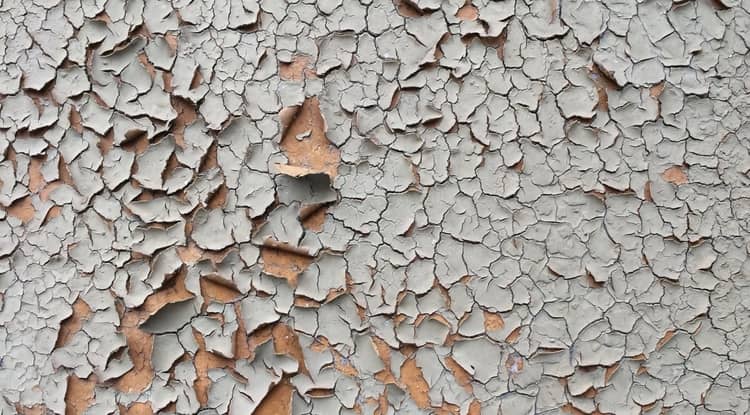
These water marks may also indicate water damage by other sources like leaky pipes, damaged foundations, leaky faucet etc. I will discuss more on that in this section of the article.
However, if it is not because of problems like above, it is highly likely that high humidity in your home or a particular room, that may or may not be due to misuse of humidifier, is the source of those water stains.
After the fault is sorted, you can actually paint over water stains in case of discoloration.
However, if water retains on wall repeatedly for long time, mold will grow on it, causing paint and wallpaper to peel off. This will severely impact appearance and look of your house walls.
3. Foggy Windows May Also Cause Mold
Any medium of your home, that separates from colder outside, when not properly insulated, may lead to condensation on it by contact with warm humid air inside.
In this regard, most susceptible to condensation are windows of your home.
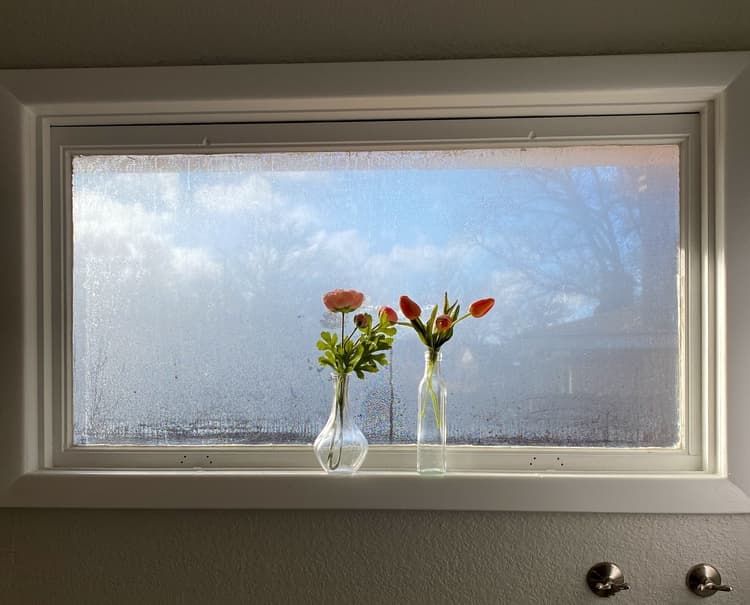
If windows are not thermally insulated, they will develop fog in colder weather. The reason is that they will not be able to stop heat from your room to move outside.
It would be annoying of course to have foggy windows blocking the view.
However, despite blocking outside view, consistent and repetitive condensation on windows will cause mold on its casings and sills. It may eventually spread to surrounding portions of walls due to consistent exposure to water.
The solution is using a double or triple-glazed windows that thermally insulate indoors from external environment.
Note: If fog or condensation develops inside double or triple-glazed windows, it’s usually due to damaged or displaced seal. If not fixed these too will lead to mold with time.
How Vulnerable Are Your Home Walls to High Humidity?
Believe it or not, material of walls and how they are built differs in different parts of the World.
The effect of high humidity on walls, whether caused directly by humidifier or supplemented by it, depends on its construction and constituents.
Let me explain the reason; why some walls are more sensitive to high humidity than others.
Specifically for United States, usually walls are more susceptible to damage by mold and thereby can be affected more from relatively high humidity levels.
Actually, most US homes are made of wood mainly and wood is vulnerable to mold. It provides a great breeding environment to mold, due to its porous structure and ability to retain water.
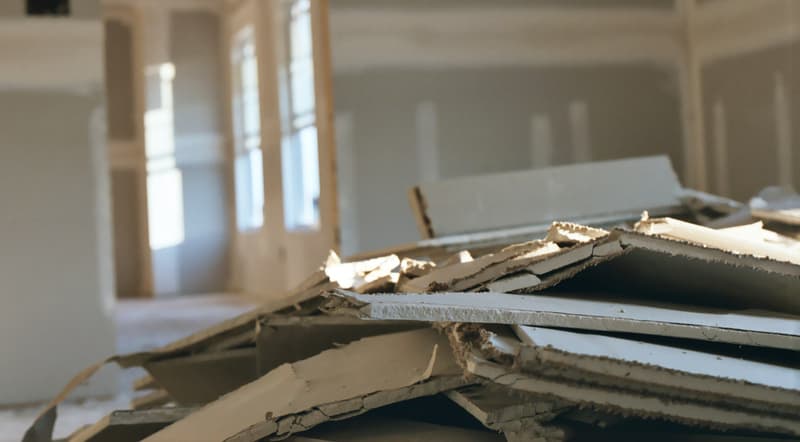
Even if you see stones or bricks outside a house in US, they only act as a veneer. They have nothing to do with the actual supporting structure and inside walls of your home.
Wood framing remains the dominant construction method for single-family homes in the U.S. For 2019 completions, 90% of new homes were wood-framed.
National Association of Home Builders
Outside of US, for example in Europe, homes are usually built from bricks, concrete, blocks etc.
Thereby these homes are way more resistant to mold, compared to those that have most components mainly containing wood as an ingredient, like wooden frame, drywall, cardboard etc.
Even if mold grows on them, damage to internal structure will be much less with masonry than wood.
Conclusion: Humidifier operation should be carefully monitored with homes mainly made from wood. They need extra care in maintaining recommended humidity levels. Especially, if you are using a whole house humidifier.
Is Your Humidifier Actually Causing Damage to Walls?
It is true, inadequate and more than necessary humidifier usage will affect walls of your home. However, there is a possibility of other household defects that may be damaging your walls.
This is especially true for local water damage on certain portions of walls. It can be an indication of a fault in the house rather than overall high relative humidity.
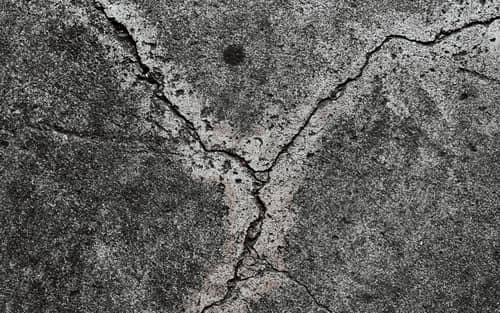
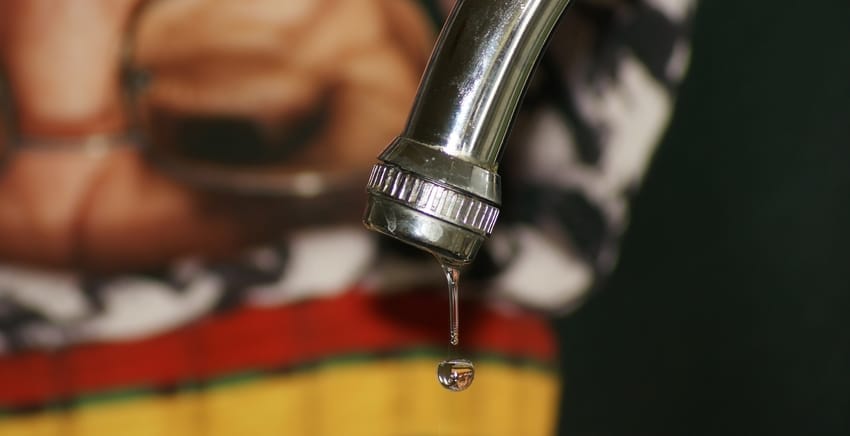
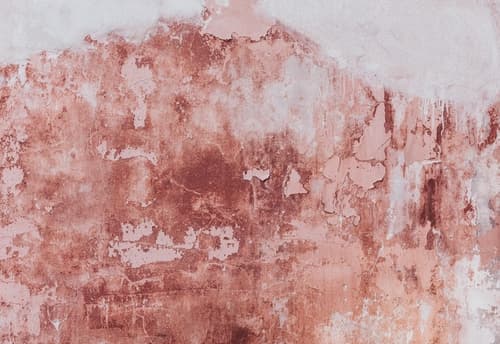
For example, if you have damp patches and mold only in the lower portion of walls, it may be due poor drainage or bad subfloor ventilation.
Similarly, there is a possibility that damp patches on the walls indicate cracks or gaps that are allowing moisture to pass through.
Many people also face high humidity problems in their basements due to poor insulation, especially if there are cracked foundations or water pipe leakages.
These are just some of the possible internal faults that you may have in your home. But you get the point, before concluding humidifier as the reason for damage to walls, it is a good idea to look for local problems, faults and defects within your home.
How To Know If Humidifier Is the Cause of Wall Deterioration?
Below, I share some tips for a simple diagnosis, that may help you identify if humidifier is the source of water damage to your walls, and assist you in narrowing down to the actual problem:
If you notice stains and molds on walls of your home it is time to decide between two possible reasons for it:
Reason # 1: There is high humidity in the entire space due to which you observe wall deterioration.
Reason # 2: The source of the problem is local and due to an internal fault in your home like water leakage, cracked foundations, kitchen and laundry activities etc.
Condensation on relatively colder surfaces such as windows, mirrors, metals etc. is an indication of high humidity.
If you are seeing such signs, they are an indication of Reason # 1. I would advise to monitor relative humidity in the space by using a hygrometer or humidistat.
Measure relative humidity in your home and compare it with outdoors. If overall humidity is relatively high i.e., well above 50%, it is time to consider ways to normalize it like powered ventilation or dehumidifier.
However, if by comparison of relative humidity, you detect a large difference of humidity outdoors and indoors, damage to walls may be due to Reason # 2.
If humidity outside is sufficiently low i.e., below 50% and you are experiencing peeling paint, creaking floorboards, discoloration, water stains and marks, this indicates a water problem.
If this is the case, you should contact adequate home maintenance services to diagnose and resolve the fault for you.
Local household water problems indicate that humidifier is not the actual source of damage but it can surely supplement damage to walls if these problems are not fixed.
Useful Tip: Try not using humidifier a couple of days. If situation improves, you can stop using humidifier or use it for less time and at a lower range.
Note: Remember, some rooms in your home have higher humidity levels compared to others. For example, you can expect somewhat higher humidity in kitchen and laundry room due to higher water usage.
How To Prevent Damage to Walls When Using Humidifier?
1. Use a Hygrometer: It’s Cheap and Effective
You can make a rough estimation of high relative humidity in your home by your instinct. Air feeling heavy, musty or moldy smell, water stains on walls are all indicators of humid environment.
However, I would advise you to invest in a hygrometer. A couple of bucks and you would know accurate value of relative humidity in a space.
I actually selected a hygrometer for you, taking into consideration several factors, including accuracy, quality and value for money.
The reason I recommend SMARTRO SC42 Professional Digital Hygrometer is because of its high accuracy swiss humidity sensors with tolerance of ±2%RH, which is pretty great for this price.
It can be manually calibrated and certified by Aerospace Institute for Metrology and Measurement Technology.
After monitoring humidity levels using hygrometer, you can take measures to decrease or increase humidity. Most expert state recommended humidity range between 30 – 50%. In winters, I would try to keep relative humidity close to lower limit i.e., 30%, due to reasons mentioned in this section.
Another advantage of using a hygrometer is that you will be able to compare humidity levels in different rooms of your home and identify rooms with very high humidity relative to other rooms.
Generally, you can expect more humidity in basement, attic, laundry room, kitchen etc. If humidity is sufficiently high in one room this could be an indication of problem in that specific location.
2. Inspect Wall Insulation Especially Roof Insulation
This is something that I discussed a little earlier. Bad attic insulation especially can be a source of damage to roof.
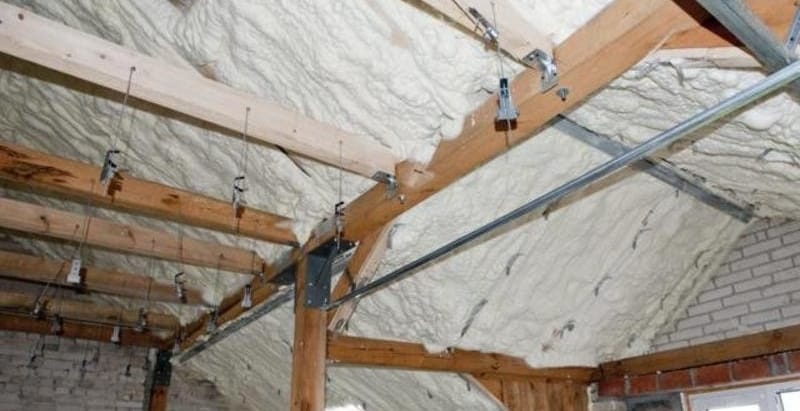
Let me explain why this could be a real problem…
In winters, air is dry, so you need an external humidification source to bring humidity to comfortable levels. On top of that, heating is a requirement to survive in winters, which further reduces relative humidity.
Using a humidifier will normalize humidity in the environment. However, warm and humid air in the room will rise up to the ceiling. With a poor roof insulation, it would travel through it towards dry and cold attic.
As a result, air will condense, but due to very low temperature this condensate will freeze.
When weather becomes warm and temperature increases, frozen condensate will melt and move towards ceiling of the room. You will see it as water marks and stains on it.
Eventually, consistent water retention would lead to mold that will discolor wall, peel paint off it and eventually destroy it.
By improving insulation in time, you will be able to prevent a lot of damage to walls of your place.
3. Prevent Sudden Temperature Changes Indoors
Walls of your home are affected by humidifier when humid air due to it is exposed to low temperature, specifically below dew point.

If you are using any kind of heating system, portable or whole house, it will eventually turn off after required temperature is achieved in a space.
When temperature drops in the space, heater will take some time to detect it until low temperature is homogenized, especially in case of centralized heating system.
During this time, before temperature is homogenized for heater to detect it, temperature may drop low enough in certain portions of the room to cause condensation. Repeated condensation will cause mold that will affect walls of you home.
This phenomenon is especially possible in humid places of your home like kitchen, laundry room etc.
If you are experiencing this, solution is to try lowering the speed of heating system without changing target temperature. This will cause it to run for more time and reduce those intervals that may cause condensation.
4. Ensure Adequate Ventilation in Every Room
If indoors is very humid compared to outdoors, first advice that I would give you is to improve airflow in your home. Particularly, if humidity in one room of your home is way high than other rooms.
For example, by using a hygrometer, you identify that humidity is low enough to use humidifier in your home, except in one room where humidity is really high. Let’s say that room is laundry room. If not due to any fault, you can employ one of the methods of ventilation below to reduce humidity.

Generally, there are two types of Ventilations: Natural Ventilation and Powered Ventilation.
Natural ventilation is the most common way to vent air. It is also called passive ventilation. It does not consume any power to operate.
The basic principle employed in this type of ventilation is the fact that warm air is lighter and it moves to the top, while cold air is heavier so it is in the lowest part. Airflow is created using intake and exhaust vents.
Depending on your needs you can also use powered ventilation.
This type of ventilation is carried out by the application of fans. They will allow forced airflow through the space.
5. Thermally Insulate Windows of Your Home
Even with good wall insulation that prevents heat loss, a conductive window glass may undermine its effectiveness by losing heat to cold outside.
As an aftereffect, warm humid air will come in contact with cool windows below dew point temperature and condensation will occur.
Primarily, condensation on windows is a source of discomfort by preventing you to see outside. However, foggy windows will continuously drip water that will have to be cleaned.
Water retention on window sills and casings will eventually result in mold. This would also affect surrounding wall in which window is fixed.
Solution is to use thermally insulated windows that prevent heat from indoors to go outside. They are double pane and triple pane depending on your requirements.
Actually, these windows have an insulating gas in between layers of glass that prevents heat to move outside and inner surface to get cold.
Thermal windows will also decrease your electricity bills.

